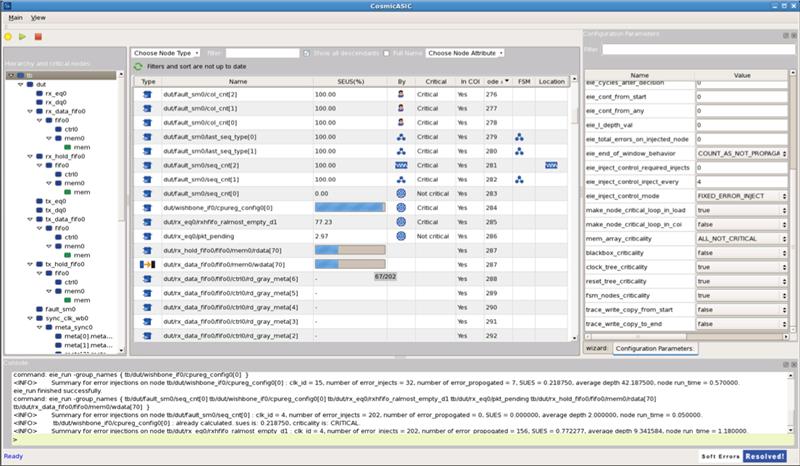By increasing fault analysis performance by orders of magnitude, Optima is able to offer customers a reduction in analysis time from months to a matter of a few days, as well as automated coverage improvement and design safety.
Fault analysis of large automotive safety critical devices, as stipulated by the ISO 26262 standard, can require months of compute time to perform so by reducing this time, new forms of analysis can now be performed that improve device safety and quality while ensuring an accurate measure of fault resistance.
In addition, Optima’s automated CoverageMaximizer technology allows for design areas not analysed during verification to be eliminated, further improving the analysis process.
According to Jamil Mazzawi, the company’s founder and CEO, the tools have been designed to meet fault simulation for ASIL-D, the highest level of safety for autonomous vehicles.
“Up to now, automotive ISO 26262 fault analysis has made use of traditional, slow fault simulation technology designed for a different purposes.
“We have taken an entirely new approach to this problem, building the fault-simulation algorithms from the ground up to realise dramatic improvements in this time-consuming process. This has opened the potential for new analysis solutions that allow previously unavailable operations to be performed that maximize functional safety coverage and ultimate device quality.”
Currently, the only tool available for safety fault analysis has been traditional fault simulation, a 30-year-old technique that was designed to target semiconductor manufacturing testing. Optima’s engineering team has developed a new, proprietary set of fault analysis algorithms that specifically targets safety analysis fault injection.
By leveraging parallel simulation and formal verification technologies, avoiding issues caused by manufacturing fault simulation requirements, and taking a new slant on fault optimisation methods such as fault list pruning and collapsing, the FIE provides much improved analysis performance.
The company has used the FIE technology as a basis on which to build specialised solutions for different fault scenarios
The Optima Safety Platform includes a broad range of fault analysis solutions for different applications and industries. Its two initial solutions that target ISO 26262 automotive safety fault analysis provide streamlined solutions for hard errors, or permanent faults, and soft errors, or transient faults.

Optima-HE uses the FIE to perform fault analysis for stuck-at-1 and stuck-at-0 hard-errors. Based on the ISO 26262 standard categorisation, the solution identifies dangerous faults in a design that are not trapped by a safety mechanism and could cause a significant failure that might lead to personal injury. It analyses large design code bases extremely rapidly, reducing a process that used to require months down to a few days or less. This enables development teams to predict an accurate metric for fault coverage that makes an ASIL-D rating for their devices possible.
Optima-SE also uses the FIE to perform soft-error analysis on transient faults which are notoriously hard to identify due to their temporary nature.
A technique of “flip-flop hardening” for critical areas of the design may be used to eliminate transient fault effects. However, hardening every flip-flop in a design is extremely expensive in terms of silicon area and power consumption. By iteratively applying fault analysis it is possible to identify a subset of the design flips-flops, which if hardened will ensure a high degree of transient fault resistance while minimizing additional flip-flop circuitry.
However, this valuable process requires many fault analysis runs making it prohibitive for most device development programs. Leveraging the high performance of the FIE, Optima-SE makes this process possible in a reasonable amount of time, thereby dramatically increasing device quality. Running on a customer design of a commercially available CPU, Optima-SE has been shown to run over 10,000 times faster than regular RTL simulation.













